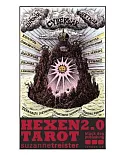The Mughal Empire was the most powerful Islamic empire in the history of India, and it has lived for centuries in the Western imagination as a wonderland of unimaginable treasures, symbolized
most clearly by the breathtaking beauty of the Taj Mahal. This richly illustrated cultural history dispels the air of exoticism and mystery with which Westerners have often viewed the
Mughals, but in doing so The Empire of the Great Mughals reveals that the cultural and artistic achievements of the Mughal Empire are no less astonishing when viewed in the cold light
of historical fact.
Ranging from the founding of the empire in 1526 through its absorption into the British Empire in 1857, The Empire of the Great Mughals explores all aspects of the culture of this
mighty civilization. Annemarie Schimmel paints a detailed picture of life at court, particularly for women, and the fine gradations of rank and status in the strictly hierarchical Mughal
society. She details the interplay of the various religions, languages, and literatures of the era and the role played by imperial patronage in the creation of Mughal artwork, especially the
creation of the Taj Mahal, built as a mausoleum for the wife of the emperor Shah Jahan. Throughout, Schimmel shows how a clear aesthetic sensibility permeated every aspect of Mughal court
culture through which the Mughals attempted to bring all facets of life into harmony.
Infused with illustrations depicting the greatest works of Mughal art and architecture, The Empire of the Great Mughals is an incomparable portrait of a refined society whose
achievements still inspire awe and admiration today.





















